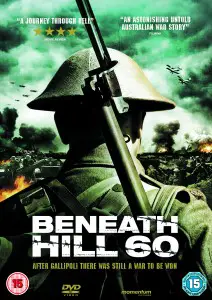Monthly Archives: June 2012
Hard work in Japanese military archives by retired professor Taketoshi Yamamoto from Waseda University has unearthed information long thought lost about the training of Imperial Japan’s elite military intelligence operators during what Americans see as the run-up to World War II, but what was for Japan already a wartime period (with China and Russia) in 1938-39. An interesting report ran in the Yomiuri Shimbun (link’s to the English version).
Professor Yamamoto found reports that the school’s commander had sent to the War Ministry, and that had amzingly survived for nearly three-quarters of a century in musty archives. The school itself, like any good spook shop, burned its records when Japan was defeated. No one expected any of them to turn up, but then, no one reckoned with military bureacracy. Apparently even ninjas can’t escape paperwork.
The most interesting revelations are the syllabus with the general content of training, which included ninjutsu, as well as some things you’d expect spooks to be learning at this Japanese equivalent of the Farm, and some you wouldn’t. The routine: photography, tradecraft, enemy languages, improvised explosives and topography. The peculiarly Japanese: physical arts of ninjutsu, horsemanship, and samurai swordsmanship, and sciences of bacteriology and pharmacology (these explained perhaps by Japan’s intense interest in chemical and bacterial warfare).
About 2,300 graduates were trained to serve behind the lines in the Nakano school, one of several Japanese schools for behind-the-lines spies and operators. (The Navy and the Kempei Tai military police operated the other schools, from which no documents are thought to have survived).
School-related documents were believed to have been burned shortly before the end of World War II, and this is the first time information about the school’s curriculum has been confirmed in official documents.
Besides ninjutsu training, students were educated in more conventional intelligence and sabotage techniques, such as bomb-making and photography.
The reports containing the curriculum were found by Taketoshi Yamamoto, professor emeritus at Waseda University and an expert on information history, among materials from the National Institute for Defense Studies that were provided by the Japan Center for Asian Historical Records.
The school was believed to have been established to train soldiers to serve behind enemy lines. The reports indicate that a predecessor counterintelligence institute was established in Kudan, Tokyo, in April 1938.
The following year, the institute was made into a training center and moved to Nakano, Tokyo, where it was reorganized as the Rikugun Nakano Gakko school in 1940. About 2,300 people are believed to have graduated from the school before it closed in 1945.
The reports, dated Aug. 7, 1939, were issued under Shun Akikusa, who was head of the training center, to War Minister Seishiro Itagaki.
via WWII spy school taught ninjutsu skills : National : DAILY YOMIURI ONLINE (The Daily Yomiuri).
The school’s first class took one year, and an entering class of 19 yielded one academic failure and 18 graduates, only three of whom had a university education before entering spy school.
The reports included the names of that first class’s students, and the names and ranks of the instructors, giving Japanese historians a lot of follow-up possibilities in the patchy imperial archives. As difficult as it can be finding things in the US archives, the US won and kept most of its paperwork intact. Japanese documents were not only deliberately destroyed but were lost in mass quantities in fire-bombing raids and as units were cut off from reporting back to metropolitan Japan and then cut off and, often, destroyed to the last man.
Hat tip: AFIO email.
New Data on 5.56 and .223
 Andrew at LuckyGunner.com (yeah, the ammo shop) thought he would look into the 5.56 vs. .223 controversy. As we have mentioned before (although in retrospect, we might have been clearer in our presentation), the 5.56 and .223 ammo and chamber specs are different in details, and the pressure measurement equipment and techniques that SAAMI, NATO, and CIP use are all different. We’ve long suspected that the variations in individual guns are greater than the supposed specification variations, but we’re not aware of anyone testing multiple chambers with identically applied technology and technique before. Companies may have done it for proprietary, in-house research, but if so they haven’t released the information to the shooting public.
Andrew at LuckyGunner.com (yeah, the ammo shop) thought he would look into the 5.56 vs. .223 controversy. As we have mentioned before (although in retrospect, we might have been clearer in our presentation), the 5.56 and .223 ammo and chamber specs are different in details, and the pressure measurement equipment and techniques that SAAMI, NATO, and CIP use are all different. We’ve long suspected that the variations in individual guns are greater than the supposed specification variations, but we’re not aware of anyone testing multiple chambers with identically applied technology and technique before. Companies may have done it for proprietary, in-house research, but if so they haven’t released the information to the shooting public.
Andrew took three rifles with different chambers and a set of strain gages, calibrated the instruments with Hornady ammunition, and then tested various permutations of ammunition. His conclusions include the following:
- As we’ve noted, there are several different chambers. Andrew notes that while there is a SAAMI standard for .223, there’s no single standard for 5.56.
- Again as we’ve noted, chamber markings may not be accurate.
- The wide variations in chambers inter-manufacturer (and in lower-priced barrels, intra-manufacturer) are greater than the differences in chamber specifications.
- There’s no real difference that can be attributed to hammer-forged chambers vs. hammer-forged barrels with reamed chambers. A quality-positive factory can do equally well either way. (That probably extends to hammer-forged versus cut or button rifled barrels, although he doesn’t explicitly take it there).
- 5.56 ammo is generally hotter (in chamber pressure terms) than 5.56. The difference, to the extent he quatifies it, is under 10%.
- Therefore while 5.56 mm ammo in .223 chambers may exceed SAAMI pressures, it doesn’t exceed 5.56 spec pressures and it’s probably safe to fire.
- He would not select a tight .223 chamber for a gun destined for high round count duty.
- Quality manufacture pays off.
- For most shooters, then, a 5.56 chamber is probably best. But the difference between chambers, ultimately, is not that big a deal. It’s more important to buy a barrel (upper, rifle) made by a firm that stands behind it.
There are a couple of things he doesn’t dwell on. One of them is the edge case produced by chambers and ammo at the relative min and max of their specification range — it’s possible for the tolerances to stack up in a way that produces higher pressures than those he recorded. (The opposite case, minimum ammo and maximum chamber dimension, is perfectly safe but likely to be less accurate. However, concentricity of the chamber is more important than its size. We’re talking variations in the low thousandths and ten-thousandths of an inch).
He also reiterates a couple of fairly standard points: in this caliber, you want faster rifling (1:7) if you’re going to fire heavier bullets. Varmint hunters with their itty-bitty slugs like 1:12 or 1:14, and 1:9 or so is a compromise for shooting M193 and M855 5.56 ammo; you want 1:7 for the heaviest stuff like M856 tracers and 77-grain loads. But the post is full of all kinds of good information, including an explanation of the graph in this post (and several more like it), so by all means go there and read the whole thing. Take notes: quiz Friday.
Guys will always bog down in arguments about things like this that are, comparatively, trivial. Don’t fall into that trap. Get ammo, go to the range, get quality training and work on shooting better and with more accuracy and confidence. That is what almost everyone needs, whether you’re the guy whose AR has a quarter inch of dust on it in the closet or whether you’re competing in three-gun every weekend.
Affiliated as he is with an ammo dealer, Andrew may have been too diffident to point that out. But we’re not.
Does the Army have Toxic Leadership?
 Officer and NCO circles have been roiling — especially officer circles — with the turbulence created by a rock that LTG (R) Walter F. Ulmer, Jr. threw into the still pools of the seldom-too-introspective Army magazine. Army is published by the Association of the United States Army and tends to be the voice of the Army Establishment, which LTG Ulmer’s career instantiates rather well.
Officer and NCO circles have been roiling — especially officer circles — with the turbulence created by a rock that LTG (R) Walter F. Ulmer, Jr. threw into the still pools of the seldom-too-introspective Army magazine. Army is published by the Association of the United States Army and tends to be the voice of the Army Establishment, which LTG Ulmer’s career instantiates rather well.
And LTG Ulmer is worried. The title of his article is “Toxic Leadership-What Are We Talking About?” [.pdf], and only a general, perhaps, or a senior colonel, would ask that question. The Joes know, the sergeants know, the company and platoon leaders and the poor exhausted majors run ragged by staff busywork, they know. They see it, they experience it, and with each change of command or PCS they say a silent prayer that they’re not about to experience it again.
The article: Ulmer_0612 [pdf link] was forwarded to us by a retired colonel who doesn’t have to ask the question, because he’s been on the receiving end of it at every stage of his career (including, although he didn’t say this in his message to his mailing list of friends and other Army stakeholders, in the Pentagon with a toxic Secretary of Defense — who, we take pains to say, served a prior administration).
This is our colonel’s pull from what LTG Ulmer says in the article:
First, I think the Army (and other Services as well) unconsciously cultivates toxic leader traits through some of its formal leadership training programs: the R-Day and Fourth Class System experiences at West Point and other Service academies, the various OCS processes, and Ranger School. In some of these programs, much is made of “Schofield’s Dissertation on Discipline,” quoted in full below. Practically, Schofield’s guidance is honored much more in the breach than in the observance.
Second, I think toxic leaders are tolerated and rewarded because, at least in the short term, they tend to be effective. At various costs to subordinates, they often succeed in satisfying bosses’ short-term objectives. Since much of the Army rotates frequently, toxic leaders seem to escape the long-term assessment and accountability for their actions that longer associations might generate.
I think LTG(R) Ulmer correctly assessed the Army’s institutional view of toxic leadership when he says, “… The toxic leader phenomenom is a slowly growing organizational cancer that can be tolerated by resilient people for a long time before causing sharp institutional pain. …” and “… Perceived institutional nonchalance about the situation is a serious contradiction of espoused Army values. …” As the old saying goes, “it’s mind over matter.” With all that’s going on in the Army today, the Army doesn’t yet mind enough and the troops don’t yet matter enough.
Our colonel also noticed something that LTG Ulmer did not discuss: one of the characteristics of a toxic leader is unreasonable perfectionism. One is reminded of LeMay’s apocryphal dictum: “To err is human, to forgive divine… neither of which is the policy of the Strategic Air Command.”
Fiction gives us the great example of a toxic leader, Captain Queeg, whether on Herman Wouk’s pages or as portrayed on the screen by Humphrey Bogart. Unfortunately we have plentiful examples in non-fiction and in the news. A historical parallel to Queeg was the man who was at once overbearing martinet and consummate seaman, A naval officer named Marcus Arnheiter in the Vietnam War had a command arc that was uncannily parallel to Queeg’s, except without Queeg’s mitigating factors.
Some recent examples of toxic leaders include the Navy’s termagant Captain Holly Graf (here, here, here, here, here and here [and 17 other pages on that site — use the search]) and of course our favorite dirtbag, Colonel James H. Johnson III.
The Army’s got some toxic-leader issues, but the Navy, which recently fired a captain for having made gay jokes some years ago, not only ignored Graf’s career-long substandard performance, but after her retirement quietly upgraded her discharge from the General Discharge the inquiry imposed to an honorable discharge. The scores of sailors and officers whose careers she destroyed were not available for comment.
Two characteristics of military officer management create this problem.
- Up-or-out makes raging careerist loonies out of otherwise normal officers. This was copied from 1920s corporate management practices but never got fixed when the corporate world binned it.
- Officers are evaluated only by their superiors, which rewards suck-up, $#!+-down “leaders”. The corporate world has long since found benefits in 360-degree evaluations, which are only used by the Army in a couple of special operations schools.
(We say officer management, but NCOs are increasingly managed by the same dysfunctional rules that officers have long suffered from).
Homemade Trigger Spring
 So, the gunsmith/blacksmith/blogger who goes by Firehand has a Remington .22 that he likes, except for one thing: the trigger’s too stiff. Looking at the mechanism, he thought maybe a lighter trigger spring would do the trick. It was a simple coil spring, so he figured that he could home-wind a matching spring of smaller-gauge wire for a lighter spring, and it would only set him back a few bucks worth of stuff from the hardware store and a little time to tinker up a spring.
So, the gunsmith/blacksmith/blogger who goes by Firehand has a Remington .22 that he likes, except for one thing: the trigger’s too stiff. Looking at the mechanism, he thought maybe a lighter trigger spring would do the trick. It was a simple coil spring, so he figured that he could home-wind a matching spring of smaller-gauge wire for a lighter spring, and it would only set him back a few bucks worth of stuff from the hardware store and a little time to tinker up a spring.
And that’s exactly what he did.
There are several ways to do this. If you can find a machine screw with the right diameter and thread pitch, you can use that as the guide, and get very nice springs. You can use a lathe set up to cut threads or with a suitable tool to turn the mandrel and control the pitch of the windings(I’ve seen pics, haven’t tried it myself); you can make a crank of a proper-diameter wire to wind the spring around. Or if you’re lucky you can visit Ace or Lowe’s or someplace and find a spring that’ll work and save all this messing around. If you’re one of those “I need that” types, sometimes Numrich or somebody will have a big bag of assorted springs for sale, you might find the right size in one of those.
You can also buy commercial spring-winding tools from outfits that specialize in machine shop stuff, like MSC Direst (our favorite), McMaster-Carr, and perhaps specialty gunsmith shops (Brownell’s) or auto-hobbyist suppliers (like The Eastwood Co.). But he improv’d: a right-sized drill bit for a mandrel, an electric screwdriver for motive power, and a few fingers to guide the el cheapo music wire. (If you’re a real el cheapo, this is the reason you don’t throw away your broken guitar strings. Guitar strings are high-quality music wire that have a million secondary uses. What, no guitar? Start learning, you need the wire).
The resulting spring looks a little hinky, but he wound it way overlong, so he can trim just the size he needs where the coils are most even.
For a spring of the same length and travel but less power, smaller diameter wire. So I measured the diameter of the spring wire(.025″ close as I could tell) and found some a little smaller, the stuff I used being .024”(music wire, from Ace Hardware in this case).** Then I got the tools together, which in this case consists of my power driver and a 1/16” drill bit as a mandrel. The driver to spin the (reversed, cutting end in the chuck) mandrel, and the bit because it was just the right diameter, which means slightly smaller than the final inside diameter: remember that wound wire will spring back just a bit when you release it, so when you finish winding and release the tension the spring will become slightly larger in diameter; so you need a slightly smaller mandrel than the inside diameter of the original spring.
via Irons in the Fire: Screwing with my trigger (update: information added).
For a less quick and substantially less dirty process, there are vast amounts of spring design and spring making information online, and classic old gunsmithing books like Howe’s cover simple springs like this and much more advanced ones, including the sort of flat springs used in many antique weapons. There’s no reason for a good gun to be sidelined by a broken spring.
 The whole article is worth reading and has many more illustrations of the process, making it pretty ranger-proof. There’s a limit to the size of the spring wire you can cold-work by hand. In those cases, you anneal the wire and make the spring using a lathe and perhaps a custom mandrel. Learning how to make springs on it is part of being a master of the metal lathe.
The whole article is worth reading and has many more illustrations of the process, making it pretty ranger-proof. There’s a limit to the size of the spring wire you can cold-work by hand. In those cases, you anneal the wire and make the spring using a lathe and perhaps a custom mandrel. Learning how to make springs on it is part of being a master of the metal lathe.
Of course, a weapon that has had modifications to its trigger mechanism must be thoroughly function-tested dry before being tried with ammunition, and it should be tested to edge conditions before really trusting the new mechanism. On a .22, you always want to have an empty case in the chamber if you’re going to dry-fire, otherwise you may damage the breech face. (Most centerfire guns can be dry-fired with impunity, but there are exceptions. Snap caps are your safest bet).
One advantage to modifying a trigger mechanism by installing a homemade spring instead of trimming the factory spring, stoning the trigger-sear engagement faces, or just about any other trigger-jobbery is this: it is completely reversible. So you can do it not matter how big a klutz you think you are.
Glock in a Waistband… again.
 We dunno about you, but we’re not going to make her get a 1″ stiff belt and a retention holster for that
We dunno about you, but we’re not going to make her get a 1″ stiff belt and a retention holster for that thong thing. At least she’s unlikely to suffer an ND in the particular organ that our recent case study did, we’ll give her that.
The image is a poster from the Hot Shots 2012 calendar. (It’s from England — is that even legal over there where those poor wretches couldn’t even get rid of bat-guano-crazy George III?) With 2012 nearly over, now we find this. It’s the usual calendar like this — women who are easy on the eyes, wearing as little as possible without requiring shops to stock the calendars under the counter, with some type of firearm blocking some aspect of their natural beauty.
Is it an acquired taste? We like exotic guns, we like exotic (and sparsely clothed!) girls, but the juxtaposition in our mind doesn’t quite come off. Maybe we just think guns are a pretty serious thing; we’re delighted to see today’s free women using them more than ever before. We’re delighted to see women take up guns as practical tools — women tending to be smaller, they get more value out of a defensive handgun that a male — and for sports and enjoyment. (We also love the way that women listen to coaching and improve as shooters, much more than headstrong guys who think they are born marksmen). But that’s a bit more of a serious business than is justified by a cheesecake calendar. Maybe we need two calendars, the girls calendar and the guns calendar.
Hmm, if we did that we could probably find a girls calendar without the intervening clothing. We might have to hide it from the serious women, is all.
After all, these days you don’t want to mess with ’em. They have guns!
Stolen Valor Supreme Court decision this week

This guy turned out not to be Larry Gugle. So there’s two phonies making about the same claims. SCOTUS will say this is OK?
While we try to stay out of politics here, the sheer scope of the government means that sometimes politics is interested on us. This is one of those weeks. This week the Supreme Court will announce its final decision on the Stolen Valor act. One of the handful of posers convicted under it is trying to reverse the judgment of a jury of his peers.
Today’s decisions are out and did not include this case, so it most likely will be released tomorrow or Wednesday. Thursday is the last work day of the term and court watchers expect the biggest and most controversial decision to be released then, so the Stolen Valor case will probably come earlier.
Unfortunately, court watchers also expect the court to overturn the Stolen Valor Act on 1st Amendment grounds. This is the sort of decision the court gets the big bucks for — a real, legitimate conflict between a pressing public interest (thinning the herd of military phonies) and civil rights, in this case the all-but-absolute right of free speech that Americans have to a greater extent than even the citizens of other industrial democracies.
If the law goes down, as we expect it to, the immediate effect will be to uncork the black armies of the emperor of Hades the pathetic teeming bacterial swab that is the collected wannabes and blowfishes of America. At least for a while.
This does not mean that the law was a crummy idea, it means the alleged law experts in Congress wrote (another) crummy law. We are hoping that with the slapdown comes some guidance on what sort of a counterattack on these drones would be Constitutionally sound. And then we’ll have to start the arduous process of inducing Congress to pass an updated law. But then, we can do arduous.
There is one opening through which the Court could preserve the law: they could rule that the 1st Amendment protection of free speech does not protect false and misleading speech. But the lawyersphere suggests that drawing a sufficiently bright line that would incriminate the assclowns and not threaten, say, someone telling a humorous tall tale at a bar, may be a lot tougher to draw than a non-lawyer would think.
The Volokh Conspiracy website contributors are almost all law professors, and they will analyze the decision from various angles (not, unfortunately, from a veteran’s point of view: vets are nearly nonexistent in the legal academy) when it comes. If you know another good analysis link, post it in the comments.
Phonies like John Giduck (2-time Assclown of the Ides) and blowfish like Ken Aden and Matt Beck (this morning’s featured phonies) are watching the court with hope and interest. We have a message for them. If you win on this, posers, don’t party like rock stars (you ain’t that, either). Because we are not giving up, and we have been selected and trained to be relentless and inexhaustible.
We hate to waste ink on Blowfish…
…even though WeaponsMan.com comes to you daily on 100% recycled electrons. But both of these jackwagons need even more public shaming. Both of these losers are claiming SF, and they’re doing it with such brazen in-your-face assclownery that it takes our breath away. (And after the two main courses, we may throw some minor blowfish in as dessert. A veritable battalion of these jamokes has been building up, creating a sort of assclown plaque, hardening our intertubes, whilst we’ve been doing analog stuff).

Ken Aden — Special Forces phony, faker, fraud. The lesser of two weevils. Image: Aden For Congress committee.
We’ll begin with the lesser of two weevils. But despite a military career short on distinction (and to be specific, an attempted Special Forces career long on FAIL), Ken Aden is not light on ambition. He intends to be the next Congressman in District 3 in Arkansas. We don’t know who else the Razorbacks have to choose for that job, but having had a look at Aden, we’ll give the other guy a full-throated endorsement. Or girl — we’re not prejudiced that way, just in favor of Congressmen (-women) who are not SF poseurs. Which rules out Ken Aden.
Now, it’s a shame we have to get out these rusty old nails and hammer and mechanically fasten poor Aden to the WeaponsMan Cross of Wannebe Woe, but, well, he asked for it. You see, he wasn’t content to claim his actual military service, which was honorable but not spectacular. He either received through error, or procured dishonestly, a DD 214 (the Department of Defense form for discharge papers) with one entry indicating a Special Forces Military Occupational Specialty. The services use MOSes (or their equivalent, like AFSCs) as shorthand for the job title. Special Forces MOSes all begin with the number 18 and then further characters; what comes after the 18 tells you a Green Beret’s job on the team. (A Weapons Man is an 18B and they are the fightingest, steadiest, most precise, and handsomest members of most teams, FYI). Aden’s bogus DD 214 made him out an 18C, or Special Forces Engineer Sergeant.
So how do we know it’s bogus?
- His campaign only released a partial 214 (this is a major red flag and demonstrates intent to deceive)
- The campaign only released it to Aden supporters in the media, an even bigger bandera roja.
- The only place anything SF-ish appears is in the listing of specialties. No school, no awards, no SF assignment. Zilch.
- It runs concurrently with his other specialty (his real one) of Infantry.
- His “18B” MOS is malformed. It shows “18B3P” but you can’t have a “P” Skill Qualification Indicator with an 18 series MOS. Why? “P” is for Parachutist. You cannot begin the SF pipeline unless you are a qualified parachutist, so it’s subsumed into the 18. Most initial entry SF soldiers these days have an L there, for Linguist, and many second-term soldiers have a V for Airborne Ranger, but as we’ll see, Aden didn’t get as far as that kind of schooling.
- He does not show award of the Special Forces Tab. Always awarded to graduates since circa 1983.
- He does not show the Special Forces Qualification Course in his military education.
- (and this is the big one): the records at the Special Warfare Center and School show that he was a failure in the 18D (Special Forces Medical Sergeant) course. He was recycled into the much easier 18B Special Forces Weapons Sergeant course (yeah, we admit it — the medic training is longer and much more intellectually demanding than weapons. And our team medics were the kindest, bravest, warmest, most wonderful human beings we’ve ever known). He failed the 18B course and he was threecycled into a second shot at 18B. He failed again. With three failures in a single phase of SFQC, it was obvious that SF level academics were beyond him and he was released. So yes, he attended SF school, but no, he never qualified and the MOS listed on his DD 214 is error or fraud. (While you are training, you still have your old MOS. “SF babies,” members of the 18X program who don’t have a conventional Army MOS, have no MOS, like basic trainees, and then an Infantry MOS after completion of the OSUT phase of training, until Regimental First Formation on SFQC graduation).
- Some of the instructors from his course still remember him, and they remember he failed. Ditto the now-retired sergeant major of the school during his period of attendance.
- He has been unwilling or unable to release complete records, although records released under the Freedom of Information Act do not corroborate his claim.
- He has been unwilling or unable to name an SF soldier who can vouch for his qualification or service in an SF unit, unwilling or unable to provide his Yarborough knife number, etc. He’s basically gone silent on the subject and has resorted to the DAMN approach: Deny everything, Admit nothing, Make counteraccusations, Never change your story.
In short, he’s about as SF as Santa Claus.
Jonn Lilyea over at This Ain’t Hell has been banging on Aden like a gong, and Aden has sent a few hopelessly outwitted sock puppets to engage with Jonn’s readers in the comments. Got popcorn? Here’s the links:
- In which Jonn discovers Aden, dismisses him as a poser, and discovers that Aden has been memory-holing his months of “green beret” claims.
- In which Jonn fisks the partial DD214 posted by Aden’s campaign. This is where we start to see that this document is erroneous or fraudulent.
- In which Jonn posts and fisks Aden’s actual 214 which he was trying so hard to hide.
Jonn Lilyea is not even a member of our Regiment, so we’re extremely grateful for him and his commenters for putting the heat on this pustule. As you can imagine, the members of the Regiment are not silent on phony blowfish Ken Aden. Here is the ProfessionalSoldiers.com thread on him. For those who are not members, the ps.com (as members call it) convention is that a vetted, documented Special Forces soldier or officer bears the label “Quiet Professional” beneath his screen name. Mods who are QPs are labeled — what else? — “QP moderators”. Notice that almost everyone posting in the Aden thread is a Special Forces soldier — unlike Aden.
So, let’s move on to the next assclown. Even though Matthew Beck is the greater of two weevils, we’re not going to give him the ~1000 words that Aden received. Because Beck has been sufficiently retarded as to tattoo his false claims on his very skin. Yeah. And then posted pictures of his fraud-bedecked skin on facebook. Oh, yeah. We’re gonna let Beck’s body art — or body brain fart — speak for itself. Well, we may assist with a snarky caption.
We were going to say a few more words about a few more turds, but we’ve wasted a lot of space on these two crumbs, and they are sadly typical: one using a bogus claim to advance his career, another using similar bogus claims to prop up his ego, peas in a pod of purulence.
Something tells us the folks of Arkansas are going to do the right thing, even if Aden never will. And Beck — well, he’s going to hit bottom some day and he’ll still be tattooed with a bunch of badges and medals that belong to someone else.
Sunny Sunday…
…is the forecast here. Hope your Sunday is sunny as well. Expect the Saturday posts to go up sometime today.
That was the week that was: 2012 Week 25
This is going to be a very hasty TW3 post, in order to get it up there for youse, as La Cosa Nostra would put it.
Summary of the Week
We had a number of vet-interest posts but not enough weapons tech, and it was a very light week overall with just 14 posts, or a Turkish A-team’s worth. (Speaking of those Turkish A-teams, are they moving into position to conduct PR missions if their government spanks Assad? Probably not, but I bet they wish they were).
The most actively-commented post was the one on the toxic COL James H. Johnson III and his command wrist-tap. Are toxic leaders common in the Army? (Duh. No organization is more resistant to 360-degree evaluation. Evaluations are designed to reward ticket-punchers and suck-ups. What do you think?).
Closely behind in commenting interest was A Striking Injury. You know when your mother told you, put that thing down, you’ll put an eye out? Well, these kids didn’t listen to their mothereither. Good news: they didn’t put an eye out, just a through-and-through of the cranium with a diver’s speargun. Kid’s gonna be okay… head injuries are complex and strange.
We did not pick a comment of the week, although one comment did motivate us for a cool post next week.
The Posts
- Our normal Sunday post was called Sunday: it was the Ancients…
- We created a whole new category for that guy you don’t want to be, and our first entry was called: Don’t be that guy: ND
- Sometimes, ‘Army Strong’ is an odor, and the aroma is strong with Colonel James H. Johnson III.
- Authorities say hitchhiker shot himself and his story of a drive-by was bogus. The original claim had people scratching their heads (Drive by? Rural Idaho?). The correction will probably lead to pshrinks examining his.
- Tuesday’s time for a Travis Mills Update
- Wednesday Weapons Website of the Week: Father Frog’s Ballistics
- Chicago, Guns, and Reason don’t go together.
- We don’t send FLASH traffic casually, but this deserved it: FLASH! Congratulations to Charlie Cleveland
- A Striking Injury meets a hard head.
- An Army Achievemenent Medal’s Worth $2,000? Well, it was until eBay canc’d the auction.
- This probably wasn’t really news. Army Psyops for Rangerettes Continues. The same information operations bureaucracy that was lame, late, off target and ineffective in Iraq and Afghanistan now turns its wobbly blunderbuss on the American public.
- By that point it was clear it was a Lame-o posting week…
- Professor Art Carden of Samford U has a sensible proposal about the TSA: disband the whole thing.
- We did have a good movie for Saturday Matinee 25: Beneath Hill 60. We have two possible reviews for next week: want to hear about the okay film, or the lousy one? Let us know in the comments.
- And That was the week that was: 2012 Week 25 is this post. This time we went ahead and put the recursive link in, to see if any of you super-geniuses spend all day going round and round like a dog chasing his tail.
The Stats
15 posts, about 9000 words, 24 substantive comments.
Saturday Matinee: Beneath Hill 60
 In August 1914, a handful of shots fired from a Browning 1910 triggered the collapse of the balance of power between two mighty alliances. The Great War had begun, and the world would not be the same — not least, for the many millions personally involved, millions of whom would die before the age of absolute monarchy was over. In the West, Germany executed a modified version of its Schlieffen Plan, designed to sweep around behind French forces. For several reasons — the taxicab army, ponderous horse-borne logistic trains, German tinkering with the purity of the original plan — it failed, producing a stalemate from the Belgian coast to the Swiss border.
In August 1914, a handful of shots fired from a Browning 1910 triggered the collapse of the balance of power between two mighty alliances. The Great War had begun, and the world would not be the same — not least, for the many millions personally involved, millions of whom would die before the age of absolute monarchy was over. In the West, Germany executed a modified version of its Schlieffen Plan, designed to sweep around behind French forces. For several reasons — the taxicab army, ponderous horse-borne logistic trains, German tinkering with the purity of the original plan — it failed, producing a stalemate from the Belgian coast to the Swiss border.
This stalemate quickly hardened into stationary warfare, characterized by elaborate field fortifications (trenches and dugouts), occasional strongpoints — the relentless pounding of artillery made permanent fortifications a non-starter — and a general primacy of the defence. For the next four years, the lines shifted seldom, little, and at great cost. In his history of warfare, FM Lord Bernard L Montgomery titled his chapter on medieval warfare “The Twilight of Common Sense,” but he could have applied that just as readily to the Great War, which he himself experienced.
Modern culture remains fascinated with the war and the men who fought it, and it is a perennial subject for movies. Nowhere is this truer than Australia, where the calvary of the Anzac Corps is as central to the Australian national gestalt as the Alamo is to the Texan. Australians, even more than other colonials, were viewed with a bit of condescension by the officers of the mother country, with class-conscious Brits alarmed by their Aussie counterparts’ supposed prison origins as much as their egalitarianism, which the English saw as undue familiarity with “Downstairs.” These themes inform Australian films, especially the classic Gallipoli, which dealt with an ill-advised and worse-executed brainstorm of Winston Churchill’s that stumbled to a poor conclusion only, as with everything in the war, at the cost of a bestial slaughter.
Beneath Hill 60 takes us to the Western Front abbatoir, but only after first showing us Oliver Woodward’s life at home (the script was based on the real Woodward’s unpublished diaries, which remain in the hands of his descendants). “Home,” for him, is a bit loosely defined; while most of the men joined up straightaway in 1914, as a mining engineer he is thought to be doing more for the war effort by exploring and mining in Papua. But in a visit to friends, whose son is already at war and one of whose daughters is his love interest (played by Bella Heathcote), he learns that the forces have put out a call for miners and tunnelers. Ultimately, he has to go.
While today we think of a mine as something that comes from a factory and needs to be put in a hole and a safety pin pulled, traditionally mining was a key component of military engineering. (So yes, this is a movie for you 18Cs to enjoy). The objective was to undermine your enemy’s works and blow them up. This is covered in Vauban’s treatises, it took place in fortification sieges in the great wars of Europe, and it was common in sieges and positional warfare in the US civil war (you may remember the mine blowing in the movie Glory). Another Union mine that was improperly exploited led to the sanguinary failure of the Battle of the Crater.
In France, Oliver finds himself responsible for just such a mine, beneath a mighty German strongpoint (the Hill 60 of the title). His men are beset by filth, disease, exhaustion, and the omnipresent face of death in the guise of German shells and bullets. When they go underground, they face cave-ins, shifty blue clay and quicksand, and pervasive, claustrophobic conditions. (Indeed, the real mine must have been even worse, because for the movie the mine sets had to have enough light for filming. The real mine had no such requirement). And even underground, they have a constant cat-and-mouse battle with the Germans, who are mining themselves. Each side listens for the other with stethoscopes and high-tech — for the period — equipment. We learn enough of Oliver’s counterpart, a tough Bavarian coal miner turned engineer sergeant, Karl Babek, to sympathize with him, too. At times, the Germans and Commonwealth forces countermine, break in to each others’ mines and short and terrible battles rage 90 feet beneath the Belgian mud. The miners use deception, decoys, and all the skills human wit can produce to beat each other.
As the mine is prepared, the sheer size of it seems staggering: over 100,000 pounds of HE. And the Brits are waiting to blow it at the right time — when a German force is packed into the trenches above. But only as that hour nears, and two supercilious British officers appear to brief the Australians, do we learn a new twist: this massive mine is one of 18 along the front, and they must go properly on schedule, before the Germans suspect anything.
But the Germans do suspect something, and they’re within hours of breaking into the Aussie tunnel. Can the tunnelers intercept them first?
The key characters in the movie are based on real individuals. We had some doubts about the one aboriginal character — was he an example of Ozzywood tokenism? But it turned out, there was an aboriginal soldier in period photographs of the 1st Australian Tunneling Company and they thought he should be represented. (It was only after the film was complete that a historian thinks he tracked down the soldier’s name, so this movie character, unlike the key white characters, isn’t an exact depiction of a specific person, but he does depict the reality of the 1st Australian Tunneling Company).
There are no weapons quibbles in this film. Anachronisms do not appear (the most common in a WWI film are later Mausers for WWI G98s, or Vickers or Maxim guns dressed to ape MG08s). This film is not about the guns per se, but when the guns are on screen, they are correct. That should be a relief for those of us who drive our womenfolk wild with constant angry outbursts: “That’s not a 1911, it’s a Star Model B… wait, the Soviet troops have MP40s? This film &#@%*&!!!” (You know who you are. Maybe we should form a 12-step group… Naah. We can quit any time). The one thing that rings false is a squib depicting a ricochet near Oliver. Bullet effects are hard to model (especially near the face of a principal actor or even a stuntman). We doubt the director could have gotten Brendan Cowell, or his insurers, to go along with a live-round near miss.
Considering the relatively low budget of this Australian film, the realism is incredible, and it’s achieved without tromp l’oeil CGI. The weapons (on both sides) are right, the uniforms and equipment are right, the demolitions charges and equipment are period-correct. The effects of the front are not spared, although there’s little of the gratuitous grue a US director would use to overstate his case. The awkward, chaste love scenes between the reserved Oliver and his proper sweetheart are, once again, period-correct and played perfectly. This plot element enriches the story, and doesn’t overpower it or feel grafted on, as it would in the hands of a Hollywood hack (we’re thinking of Michael Bay’s ghastly Pearl Harbor as the bad example here. The movie had us rooting for the Empire of Japan).
The cast are outstanding and tell us there’s a new generation of Australian talent on the way. Brendan Cowell is Everyman as the conscientious, decent, thoughtful and dutiful Oliver and newcomer Harrison Gilbertson shines in the complex part of Frank Tiffin, whose character arc goes from terrified to stoically heroic — despite Tiffin, and Gilbertson, being only sixteen years old. Two other standouts are Warwick Young as Percy Marsden and Gyton Granley as Norm “Pullthrough” Morris. (The originally Morris was so lanky he was nicknamed after the element of a rifle-cleaning kit). Young looks the most soldierly, and it turns out, rightly so: he was an officer in the Australian Army, and he organized and led a “boot camp” for the actors before filming. This technique, invented by Dale Dye some 30 years ago, has vastly increased the quality of actors’ motion and action in war movies.
Cast and crew interviews on the US DVD also tell us why the film came out so well. Cowell comes across as just as conscientious and thoughtful as his character, Gilbertson is, like his character, wise beyond his years, and all the actors interviewed displayed a touching humility about playing historical, versus their usual fictional, characters. All radiate with an intense Australian pride and patriotism that is clearly wanting in contemporary American and British actors, directors, and producers, which may explain why this Australian movie is so much better than Hollywood’s recent efforts. A short collection of B-roll shows us the clever indoor tunnel sets and some of the challenges of filming.
This film got short shrift in the United States because the Hollywood geniuses, the same brain trust that thought Pearl Harbor was history and John Carter was a blockbuster, told the Australian producers that no one in America was interested in World War One. Prove them wrong and go get the DVD. You’ll be glad you did. (Ours came from Amazon; we leave finding it as an exercise for the reader).

Kevin was a former Special Forces weapons man (MOS 18B, before the 18 series, 11B with Skill Qualification Indicator of S). His focus was on weapons: their history, effects and employment. He started WeaponsMan.com in 2011 and operated it until he passed away in 2017. His work is being preserved here at the request of his family.





